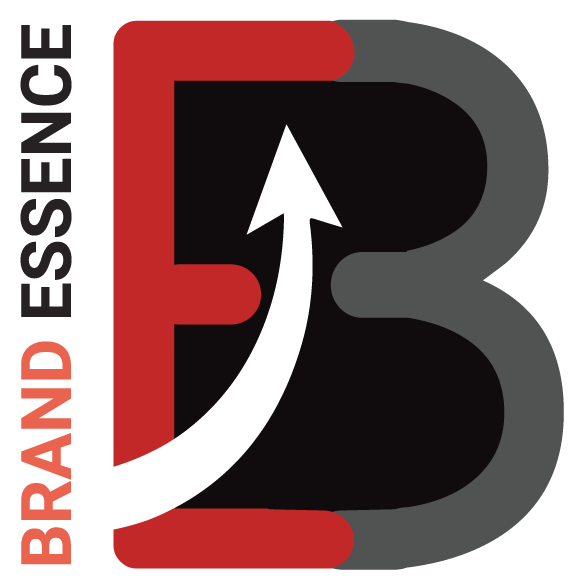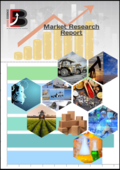
Heart Failure Drugs
Global Heart Failure Drugs Market: Global Market Size, Trends, Competitive, Historical & Forecast Analysis, 2019-2025
Report ID: BMRC 2405 | Number of pages: 193 | Publish Date: Jan 2020 | Category: Lifesciences and HealthcareHeart Failure Drugs Market unveils a succinct analysis of the market size, regional spectrum and revenue forecast about the Heart Failure Drugs market. Furthermore, the report points out major challenges and latest growth plans embraced by key manufacturers that constitute the competitive spectrum of this business domain.
The global heart failure drugs market is generic in nature; as many generic drug manufacturers and pharmaceutical giants are providing drugs for a disease. However; the arrival of innovative drugs such as EOM, is expected to change the market dynamics. AstraZeneca and Novartis hold the major share of the global heart failure drugs market with their drugs Toprol-XL and wog, respectively. The companies also hold a strong pipeline and are expected to remain the market leaders during the forecast period. Based on the drug class the market can be segmented into Beta blockers, ARBs, and ACE inhibitors. Angiotensin II receptor blockers (ARB) are a group of pharmaceuticals that modify the renin-angiotensin system. The heart disease drugs market is experiencing growth in the ARBs segment because it reduces the risk of death caused by heart failure and minimizes the chance of hospitalization of people with heart failure.
The latest trend gaining momentum in the market is investment inclination toward developing countries. Countries such as India, China, and Brazil are turning out to be some of the most attractive countries for pharmaceutical companies across the globe. Many factors such as huge share of global population and rising geriatric population are leading to the high growth of healthcare sector in the developing countries. In addition, the rising cases of lifestyle disorders such as obesity and diabetes also contribute to higher heart failure cases in the region.
One of the major drivers for this market is rising geriatric population. A large number of health problems are associated with the rising age, and CVDs are major among them. As a person gets older, the blood vessels become less flexible, thus making it difficult for the blood to flow through them. Rising age accompanied by other factors such as lifestyle-oriented diseases and smoking increases the risk of CVDs, especially heart failure. Heart failure in the geriatric population will continue to be a rising health burden globally, as this population represents the majority of the heart failure patients. Hence, rising geriatric population drives the demand for heart failure drugs during the forecast period.
In this report, 2018 has been considered as the base year and 2019 to 2025 as the forecast period to estimate the market size for Heart Failure Drugs.
This report studies the global market size of Heart Failure Drugs, especially focuses on the key regions like United States, European Union, China, and other regions (Japan, Korea, India and Southeast Asia).
This study presents the Heart Failure Drugs sales volume, revenue, market share and growth rate for each key company, and also covers the breakdown data (sales, revenue and market share) by regions, type and applications. history breakdown data from 2014 to 2019, and forecast to 2025.
For top companies in United States, European Union and China, this report investigates and analyzes the production, value, price, market share and growth rate for the top manufacturers, key data from 2014 to 2019.
In global market, the following companies are covered:
Amgen
AstraZeneca
Bayer
Novartis
Gilead
GlaxoSmithKline
Pfizer
Teva Pharmaceutical industries
Market Segment by Product Type
Beta Blockers
ARBs
ACE Inhibitors
Market Segment by Application
Hospital
Pharmacy
Others
Heart Failure Drugs market report consists of the world’s crucial region market share, size (volume), trends including the product profit, price, value, production, capacity, capability utilization, supply, and demand. Besides, market growth rate, size, and forecasts at the global level have been provided. The geographic areas covered in this report: North America (United States, Canada and Mexico), Europe (Germany, France, UK, Russia and Italy), Asia-Pacific (China, Japan, Korea, India and Southeast Asia), South America (Brazil, Argentina, Colombia etc.), Middle East and Africa (Saudi Arabia, UAE, Egypt, Nigeria and South Africa).
This research study involved the extensive usage of both primary and secondary data sources. The research process involved the study of various factors affecting the industry, including the government policy, market environment, competitive landscape, historical data, present trends in the market, technological innovation, upcoming technologies and the technical progress in related industry, and market risks, opportunities, market barriers and challenges. Top-down and bottom-up approaches are used to validate the global market size market and estimate the market size for manufacturers, regions segments, product segments and applications (end users). All possible factors that influence the markets included in this research study have been accounted for, viewed in extensive detail, verified through primary research, and analyzed to get the final quantitative and qualitative data. The market size for top-level markets and sub-segments is normalized, and the effect of inflation, economic downturns, and regulatory & policy changes or other factors are not accounted for in the market forecast. This data is combined and added with detailed inputs and analysis from BrandEssenceResearch and presented in this report.
After complete market engineering with calculations for market statistics; market size estimations; market forecasting; market breakdown; and data triangulation, extensive primary research was conducted to gather information and verify and validate the critical numbers arrived at. In the complete market engineering process, both top-down and bottom-up approaches were extensively used, along with several data triangulation methods, to perform market estimation and market forecasting for the overall market segments and sub segments listed in this report. Extensive qualitative and further quantitative analysis is also done from all the numbers arrived at in the complete market engineering process to list key information throughout the report.
The study objectives are:
To analyze and research the Heart Failure Drugs status and future forecast in United States, European Union and China, involving sales, value (revenue), growth rate (CAGR), market share, historical and forecast.
To present the key Heart Failure Drugs manufacturers, presenting the sales, revenue, market share, and recent development for key players.
To split the breakdown data by regions, type, companies and applications
To analyze the global and key regions market potential and advantage, opportunity and challenge, restraints and risks.
To identify significant trends, drivers, influence factors in global and regions
To analyze competitive developments such as expansions, agreements, new product launches, and acquisitions in the market
In this study, the years considered to estimate the market size of Heart Failure Drugs are as follows:
History Year: 2014-2018
Base Year: 2018
Estimated Year: 2019
Forecast Year 2019 to 2025
Table of Content 1. Chapter - Report Methodology 1.1. Research Process 1.2. Primary Research 1.3. Secondary Research 1.4. Market Size Estimates 1.5. Data Triangulation 1.6. Forecast Model 1.7. USP’s of Report 1.8. Report Description 2. Chapter – Global Heart Failure Drugs Market Overview: Qualitative Analysis 2.1. Market Introduction 2.2. Executive Summary 2.3. Global Heart Failure Drugs Market Classification 2.4. Market Drivers 2.5. Market Restraints 2.6. Market Opportunity 2.7. Heart Failure Drugs Market: Trends 2.8. Porter’s Five Forces Analysis 2.8.1. Bargaining Power of Suppliers 2.8.2. Bargaining Power of Consumers 2.8.3. Threat of New Entrants 2.8.4. Threat of Substitute Product and Services 2.8.5. Competitive Rivalry within the Industry 2.9. Market Attractiveness Analysis 2.9.1. Market Attractiveness Analysis by Segmentation 2.9.2. Market Attractiveness Analysis by Region 3. Chapter - Global Heart Failure Drugs Market Overview: Quantitative Analysis 3.1. Global Heart Failure Drugs Market Revenue (USD Million), Market Share (%) and Growth Rate (%), 2014- 2025 3.2. Global Heart Failure Drugs Market Revenue Market Share (%), 2014- 2025 3.3. Global Heart Failure Drugs Market Sales (Number of Units), Market Share (%) and Growth Rate (%), 2014- 2025 3.4. Global Heart Failure Drugs Market Sales Market Share (%), 2014- 2025 4. Chapter – Global Heart Failure Drugs Market Analysis: Segmentation By Type 5. Chapter – Global Heart Failure Drugs Market Analysis: Segmentation By Application 6. Chapter - Global Heart Failure Drugs Market Analysis: By Manufacturer 6.1. Global Heart Failure Drugs Market Revenue (USD Million), by Manufacturer, 2014 - 2025 6.2. Global Heart Failure Drugs Market Share (%), by Manufacturer, 2018 6.3. Global Heart Failure Drugs Market Sales (Number of Units), by Manufacturer, 2014 - 2025 6.4. Global Heart Failure Drugs Market Share (%), by Manufacturer, 2018 6.5. Global Heart Failure Drugs Market Price (USD/Unit), by Manufacturer, 2014 - 2025 6.6. Global Heart Failure Drugs Market Revenue Growth Rate (%), by Manufacturer, 2014 – 2025 6.7. Merger & Acquisition 6.8. Collaborations and Partnership 6.9. New Product Launch 7. Chapter –Heart Failure Drugs Market: Regional Analysis 7.1. North America 7.1.1. North America Heart Failure Drugs Market Revenue (USD Million) and Growth Rate (%), 2014 – 2025. 7.1.2. North America Heart Failure Drugs Market Revenue (USD Million) By Country, 2014 – 2025. 7.1.3. North America Heart Failure Drugs Revenue Market Share (%) By Country, 2014 – 2025. 7.1.4. North America Heart Failure Drugs Market Revenue (USD Million) and Growth Rate, By Market Segmentation, 2014 – 2025. 7.1.5. North America Heart Failure Drugs Market Revenue (USD Million), Market Share (%) and Growth Rate, By Market Segmentation, 2014 – 2025. 7.1.6. North America Heart Failure Drugs Market Sales (Number of Units) and Growth Rate (%), 2014 – 2025. 7.1.7. North America Heart Failure Drugs Market Sales (Number of Units) By Country, 2014 – 2025. 7.1.8. North America Heart Failure Drugs Sales Market Share (%) By Country, 2014 – 2025. 7.1.9. North America Heart Failure Drugs Market Sales (Number of Units) and Growth Rate, By Market Segmentation, 2014 – 2025. 7.1.10. North America Heart Failure Drugs Market Sales (Number of Units), Market Share (%) and Growth Rate, By Market Segmentation, 2014 – 2025. 7.2. Europe 7.3. Asia Pacific 7.4. Latin America 7.5. Middle East & Africa 8. Chapter - Company Profiles




